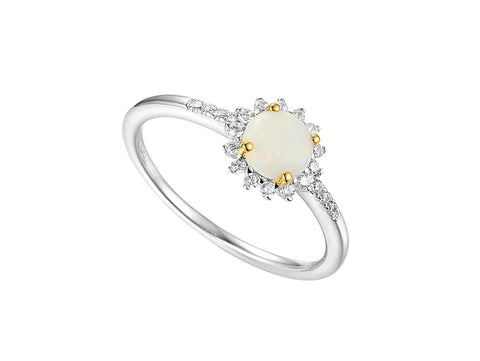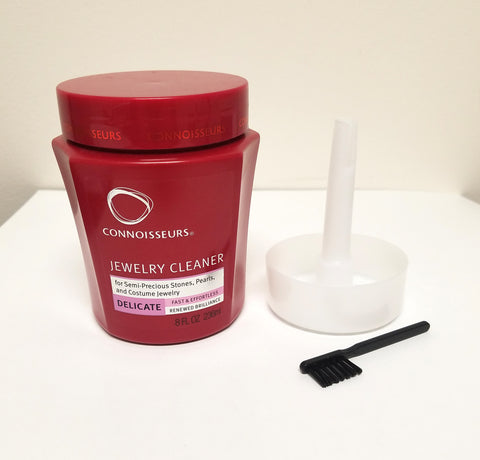Opal - The Birthstone for October
Along with its alternative birthstone, Tourmaline, October has the beautiful Opal as its birthstone. If you are intrigued about the History of Birthstones you can refer to our guide here.
With its fabulous rainbow of colours, known as a play of light”, this gem forms when rainwater enters cracks in rocks under the surface of the earth.
It has suffered a bad rap with lots of unfair and incorrect superstitions held about it.
Read on to find out more about this stunning precious stone and why it had a bad press.

Birthstone and Anniversary Stone
Opal is the birthstone for the month of October and the gemstone which celebrates the 14th Wedding Anniversary.
The Name
Opal comes from the Latin, “opalus” which derived from a Sanskrit word meaning “precious gemstone”, ‘Upala’.
Opals Formation
Opal forms when rainwater trickles into cracks within rocks and mixes with silica and then hardens as the water evaporates.
It can contain up to 20% water and, because of this, is quite sensitive to heat.
Opals form in parched, hot areas on earth. About 80% of the world’s opals come from Australia but are also found in Ethiopia and Mexico.
Opal is the national gemstone for Australia.
Colours
Gold Pendant with Triple Opals
There are five types of Opals based on their predominant colours - White, Black, Fire (orange), Boulder and Crystal.
Meanings of Opal
Centuries ago, opals were believed to be formed from flashes of lightning.
The gemstone had strong associations with good luck, good fortune, and protection.
People used to have Opal around their home to keep their children safe.
Napoleon Bonaparte presented Josephine with a red opal. Queen Victoria loved opals and wore them all of her long life.
Play of Light
A play of light is where you see flashes of colours, an iridescence, within the gemstone. This differentiates the precious gemstone Opal with the Common Opal.
Spheres make up the gemstone. The size of the spheres determines the colours that are created as the light hits them and has to bend around the sphere. Smaller spheres create one colour, say violet, where larger spheres create another colour like red.
Opals Superstitions
Around the 1890s the most precious of all Opals were discovered in Australia and began entering and gaining in popularity the gemstone market. It seems that worried Diamond traders encouraged rumours of Opals, bringing bad luck.
Sadly, these old wives’ tales remained and are often still believed today.
This bad reputation wasn’t helped with Opal being a soft gemstone (only between 5-6.5 on the Mohs scale). This meant cutting and shaping it became quite nerve-wracking for the gem-setters as, regularly, they ruined gems whilst cutting them through no fault of their own.
We can imagine that this was particularly nerve-wracking after hearing that Louis XI had his goldsmith’s hands cut off after one of his opals was damaged beyond repair whilst cutting it!
The goldsmiths of the day seemed quite happy if stories of bad luck circulated, however untrue, causing their masters not to purchase the gem. They must have dreaded their master bringing them a prized opal to cut!
Modern Demand for Opals
Opals are flourishing again and there is an enormous demand from China and India. Many young designers are using opals in their designs.
You can find Opal set in silver now, too, which has helped modernise the designs and encourage a younger age group to embrace this beautiful stone.
Care for Opals
Great care needs to be taken of opal as it is soft. Store them in a box away from other jewellery which may be harder and may scratch the surface of the opal.
Don’t use strong chemicals to clean them - we recommend the Delicate Jewellery Cleaner here.


















0 comments